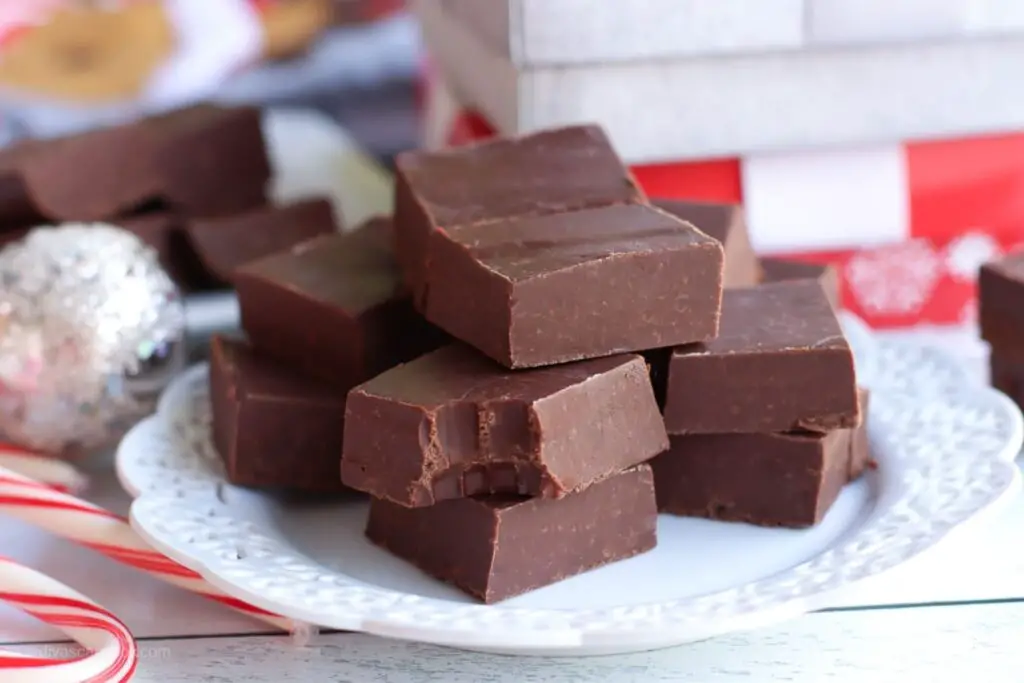
Rice pudding is a delightful dessert made from rice, milk, sugar, and various flavorings such as vanilla, cinnamon, or nutmeg. This creamy and comforting dish is enjoyed by people around the world and can be served both warm and cold. Sometimes, you might find yourself with a surplus of rice pudding, or you might want to prepare a batch in advance for future indulgence. Freezing rice pudding is a practical way to preserve its deliciousness and extend its shelf life. In this article, we’ll provide you with a step-by-step guide on how to freeze rice pudding while maintaining its taste and texture.
Here’s a comprehensive guide on freezing rice pudding:
Step 1: Cool the pudding
Once you’ve prepared a delicious batch of rice pudding, it’s important to give it some time to cool down before freezing. The reason behind this step lies in the science of freezing and the impact it can have on the texture and overall quality of the dessert.
When rice pudding is hot, its internal temperature is much higher than that of the freezer. Placing hot pudding directly into the freezer can result in what’s known as “thermal shock.” This occurs when the extreme temperature difference between the hot pudding and the cold freezer causes rapid and uneven freezing. This sudden change can lead to the formation of ice crystals within the pudding.
Ice crystals might seem harmless, but they can have a profound effect on the texture of the rice pudding. As they form, they can puncture cell walls in the rice and dairy components, causing them to rupture. When the pudding is eventually thawed, these ruptured cells release moisture, which can result in a soggy or watery consistency. This is not the creamy and velvety texture you want in your rice pudding.
By allowing the rice pudding to cool to room temperature before freezing, you’re giving it a chance to naturally release excess heat. This gradual cooling process helps to minimize the formation of large ice crystals and reduces the risk of cell rupture. As a result, when you thaw the frozen pudding and warm it up for consumption, you’re more likely to retain the original smooth and pleasing consistency of the dessert.
Step 2: Portion and place in airtight containers
When it comes to freezing rice pudding, proper portioning and selecting the right containers are essential steps to ensure the quality and convenience of your frozen dessert. Let’s delve into the reasons behind these two interconnected steps.
Portioning the pudding:
- Dividing your freshly prepared rice pudding into individual or family-sized portions before freezing serves multiple purposes. First and foremost, it makes the thawing process much more manageable. Instead of having to thaw the entire batch of pudding, you can take out only the amount you need, allowing for efficient usage and minimizing wastage.
- Moreover, portioning helps maintain the pudding’s texture and taste. Large containers of rice pudding can take longer to thaw evenly, potentially leading to inconsistent texture and flavor. By portioning the pudding, you ensure that each serving thaws at a similar rate, preserving the intended creamy consistency.
Choosing suitable airtight containers:
- Selecting the right containers for freezing is equally important. Airtight containers play a crucial role in preventing freezer burn and preserving the rice pudding’s delightful flavor and texture.
- Freezer burn occurs when moisture within the pudding evaporates and then condenses on the surface before freezing, forming ice crystals. These crystals can dehydrate the outer layers of the pudding, resulting in an unappetizing texture and a loss of flavor. Airtight containers create a barrier that reduces moisture loss and minimizes the chances of freezer burn.
- Containers made of materials like plastic, glass, or freezer-safe resealable bags are all suitable options for freezing rice pudding. Plastic containers and glass jars are sturdy and provide a solid seal, while resealable bags are particularly handy for saving space and accommodating irregular shapes.
Can I freeze rice pudding in its original packaging?
It’s recommended to transfer rice pudding into airtight containers or freezer-safe bags before freezing. Original packaging might not provide sufficient protection against freezer burn.
Can I freeze rice pudding in glass containers?
Yes, you can freeze rice pudding in glass containers. Just make sure they are freezer-safe and leave space for expansion to prevent breakage during freezing.
Step 3: Leave space for expansion
When freezing rice pudding, it’s important to consider the physical changes that occur as liquids turn into solid ice crystals. Understanding the science behind freezing and its impact on container integrity is key to ensuring that your pudding remains safely stored without causing any damage.
As the rice pudding cools down and freezes, its liquid components, such as water and milk, transform into solid ice. This change in state is accompanied by an expansion in volume. Unlike solids, liquids are more dense and compact, and when they freeze, they take up more space. This increase in volume is what can lead to potential issues when you’re freezing rice pudding in containers.
Imagine a container that is filled to the brim with rice pudding. As the liquid components within the pudding freeze and expand, they will exert pressure on the walls of the container. Containers that are completely full might not have enough room to accommodate this expansion, leading to stress on the container walls. This stress can result in cracks or even breakage of the container, causing a messy and inconvenient situation in your freezer.
By leaving some space at the top of the containers or bags before sealing and freezing, you’re providing room for the pudding to expand without putting excessive pressure on the container walls. This space prevents containers from cracking and maintains the overall structural integrity of the storage vessel.
The amount of space to leave depends on the type of container and the volume of pudding. As a general guideline, aim to leave about ½ to 1 inch of space at the top of the container. This will allow for the necessary expansion while minimizing the risk of container damage.
Step 4: Seal and label
After portioning and preparing your rice pudding for freezing, the next critical steps involve sealing the containers tightly and labeling them with important information. These seemingly simple actions play a significant role in maintaining the quality of your frozen rice pudding and helping you manage its storage effectively.
Sealing the containers tightly:
- When it comes to freezing food, particularly delicate desserts like rice pudding, a proper seal is your best defense against potential problems. Air is the enemy in the freezer. It can cause freezer burn, diminish flavor, and compromise the texture of your pudding. A tight seal prevents air from entering the container and coming into contact with the pudding’s surface.
- To achieve an airtight seal, ensure that the lids of your containers or the closures of your resealable bags are securely fastened. If you’re using containers with snap-on lids, make sure they’re clicked shut all the way around. For resealable bags, press out excess air before sealing them shut.
Labeling the containers:
- Labeling might seem like a minor step, but it’s incredibly valuable in maintaining organization and tracking the freshness of your frozen rice pudding. By noting down the date of freezing, you establish a reference point for when the pudding should be consumed at its best quality.
- Rice pudding can be stored in the freezer for about 1 to 2 months. Over time, frozen foods can experience changes in taste, texture, and overall quality due to freezer burn, moisture loss, and flavor degradation. By labeling the containers with the freezing date, you ensure that you’re aware of the recommended time frame for consuming the pudding before it starts to lose its optimal attributes.
- Additionally, labeling prevents confusion. As time goes on and your freezer fills up with various frozen items, it can be easy to forget when you prepared and froze a particular batch of rice pudding. Labels save you from guessing games and make it easier to prioritize which containers to use first.
Step 5: Freeze the pudding
With your rice pudding carefully portioned, sealed, and labeled, it’s time to introduce it to the chilly embrace of the freezer. The process of freezing is a pivotal stage in maintaining the pudding’s taste and texture, and understanding the nuances of freezing can help you achieve the best results.
Initial arrangement in a single layer:
- When you first place the sealed containers of rice pudding in the freezer, it’s beneficial to arrange them in a single layer. This arrangement serves to expedite the freezing process. When items are in direct contact with the cold air of the freezer, they freeze more rapidly and evenly. Placing them in a single layer maximizes exposure to the cold air, ensuring that the pudding sets and solidifies uniformly.
Stacking after solid freezing:
- Once the rice pudding containers have frozen solid, you can consider stacking them to optimize freezer space. However, it’s crucial to wait until they are fully frozen before stacking. Stacking containers too early can lead to uneven freezing, prolonged freezing times, and the potential for containers to stick together.
- When stacking, use caution to prevent containers from toppling over or crushing one another. Placing a protective barrier, such as a sheet of cardboard or a freezer-safe divider, between stacked containers can help maintain their structural integrity and minimize the risk of damage.
By adhering to these guidelines, you’re ensuring that the rice pudding freezes efficiently, maintaining its texture and flavor throughout the process. Rapid freezing reduces the formation of large ice crystals, which can negatively impact the pudding’s consistency when thawed. Additionally, proper stacking techniques contribute to effective freezer organization and space utilization.
How long can I store frozen rice pudding?
Frozen rice pudding can be stored for about 1 to 2 months. While it might remain safe to eat beyond this period, its texture and flavor might deteriorate due to freezer burn and quality changes.
Step 6: Thaw and serve
The time has come to savor the fruits of your freezing endeavors and enjoy the luscious rice pudding you’ve preserved. Thawing and reheating frozen rice pudding might seem straightforward, but understanding the process can make a significant difference in ensuring that the dessert retains its exquisite taste and velvety texture.
Thawing process:
- When transitioning rice pudding from the freezer to the table, patience is your ally. Instead of rushing the process, opt for a gradual and gentle approach. To begin, select the desired portion of frozen rice pudding that you’d like to enjoy. Keep in mind that you’re thawing only what you intend to consume, which is why portioning before freezing was crucial.
- Transfer the chosen portion from the freezer to the refrigerator. Thawing in the refrigerator is slow and controlled, preventing sudden temperature changes that could affect the pudding’s texture. Allow the pudding to thaw slowly overnight. This gradual thawing minimizes the risk of moisture loss and preserves the creamy consistency that makes rice pudding so delightful.
Reheating techniques:
- After the pudding has thawed completely, you have the option to serve it cold or gently reheat it for a warm, comforting experience. To reheat, there are a couple of methods you can choose from:
- Stovetop: Place the thawed rice pudding in a saucepan over low to medium heat. Stir occasionally to ensure even heating and prevent any sticking. This method allows you to control the temperature and avoid overheating, which can lead to changes in texture.
- Microwave: If you’re looking for a quick and convenient option, you can use the microwave. Place the thawed pudding in a microwave-safe container and heat it in short intervals, stirring in between. Be cautious not to overheat, as microwaves can cause uneven heating and result in hot spots.
- By reheating the thawed rice pudding gently, you’re refreshing its creamy consistency and reviving its flavors. Stirring occasionally during reheating helps distribute the heat evenly and ensures that the entire portion warms up uniformly.
Should I thaw rice pudding at room temperature?
No, it’s best to thaw rice pudding in the refrigerator to ensure gradual and controlled thawing. Thawing at room temperature can promote bacterial growth and lead to food safety issues.
Other related questions
Can I refreeze rice pudding?
Yes, you can refreeze rice pudding if it has been thawed and reheated properly. However, repeated thawing and refreezing can affect its texture and taste. It’s recommended to thaw only the amount you intend to consume to minimize the need for refreezing.
How do I know if the rice pudding has gone bad after being frozen?
Inspect for signs of freezer burn, like dry spots and ice crystals. If the texture is excessively mushy or grainy after thawing, it might have degraded. Off smells or an off taste are indicators of spoilage.
Can I freeze rice pudding with added fruits or toppings?
Yes, you can freeze rice pudding with added fruits or toppings, but consider their suitability for freezing. Some fruits may change in texture when frozen and thawed. It’s often better to add toppings upon serving for the best quality.
Can I add flavorings like vanilla or spices before freezing rice pudding?
Yes, adding flavorings like vanilla or spices before freezing rice pudding is possible. However, consider that flavors may intensify during freezing. Adjust quantities for desired taste after thawing.
Can I freeze rice pudding with egg-based custards?
While it’s possible to freeze rice pudding with egg-based custards, the texture might change upon thawing. Egg-based custards can become grainy or separate during freezing, so consider this before freezing.
Can I freeze rice pudding made with alternative milks (e.g., almond milk)?
Yes, you can freeze rice pudding made with alternative milks like almond milk. However, keep in mind that alternative milks might behave differently during freezing and thawing, possibly affecting the final texture and flavor. Experimentation is recommended.
Is it safe to eat rice pudding that has been frozen and thawed?
Yes, properly frozen and thawed rice pudding is safe to eat. However, its quality might be compromised if not handled correctly. Follow thawing and reheating instructions for the best results.
Can I freeze rice pudding made with leftover cooked rice?
Yes, you can freeze rice pudding made with leftover cooked rice. Ensure the pudding is fully cooked before freezing. Follow standard freezing procedures and thawing methods for the best results.








